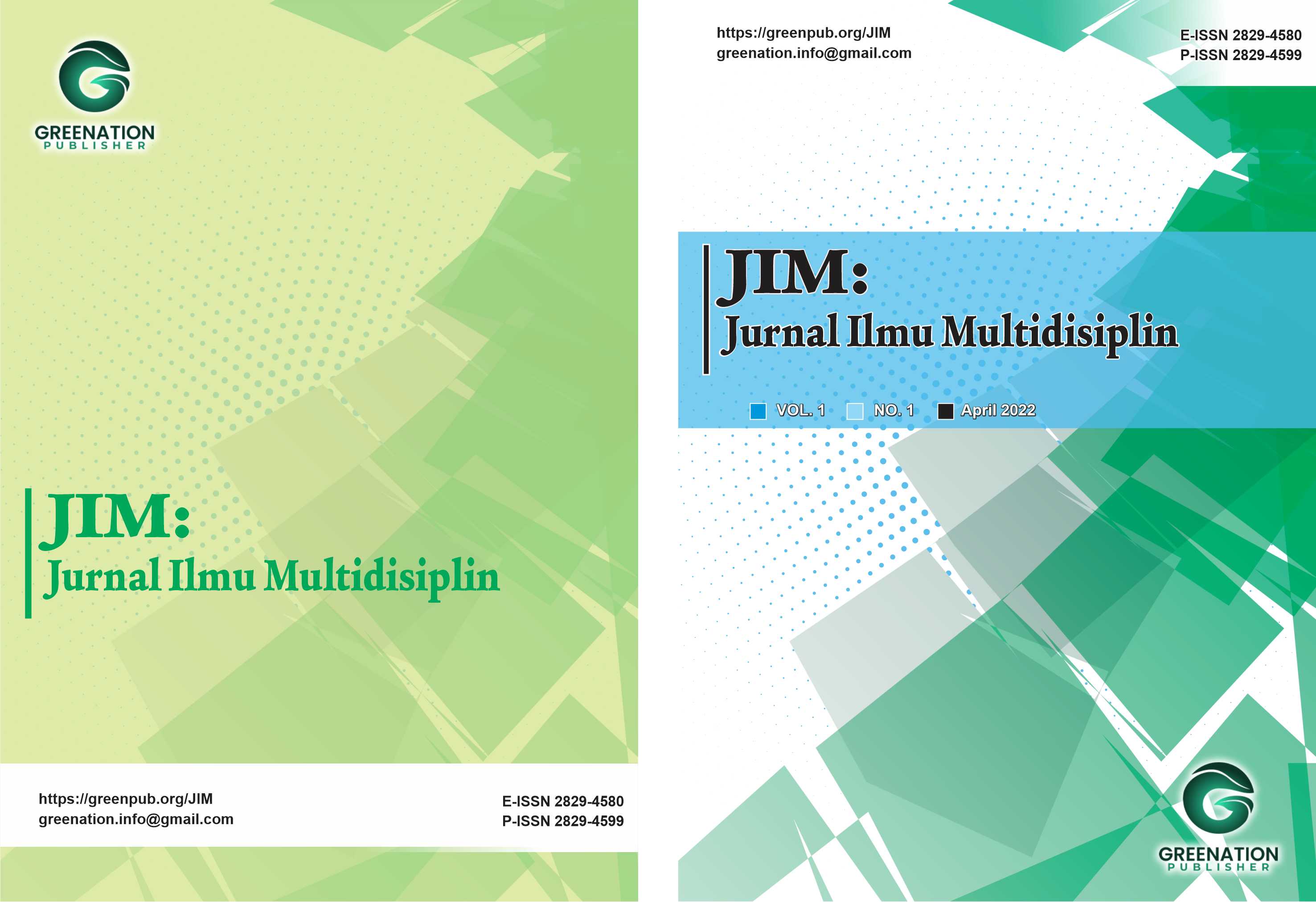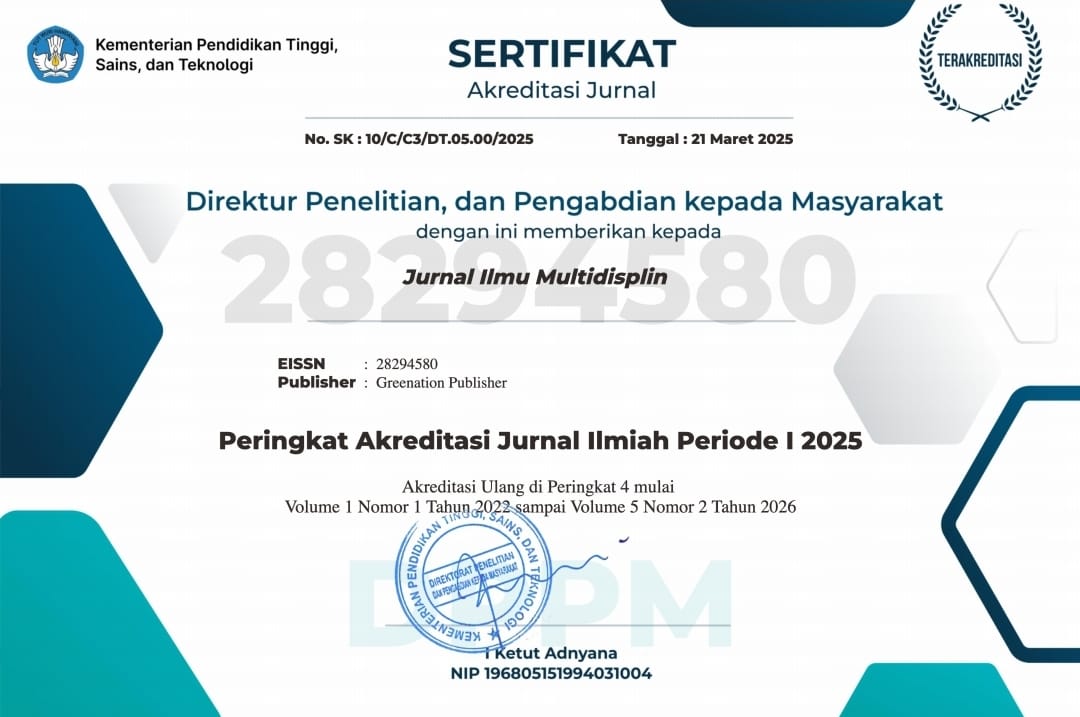A Forgotten Case of Madura Foot
DOI:
https://doi.org/10.38035/jim.v4i1.840Keywords:
actinomycetoma, eumycetoma, treatmentAbstract
Mycetoma is a chronic, suppurative, and debilitating granulomatous infection primarily found in tropical and subtropical regions. The World Health Organization has classified it as a neglected tropical disease. The clinical diagnosis is typically based on a classic triad of localized swelling, the formation of sinus tracts, and the production of grains or granules. However, atypical presentations of the disease are also observed. Mycetoma is divided into two categories: eumycetoma, which is caused by fungal organisms, and actinomycetoma, which is caused by bacterial agents. While the clinical features of both types are similar, a precise diagnosis is crucial, as treatment approaches differ between the two. The treatment of mycetoma involves surgical debulking to remove the bulk of the lesion, followed by an extended course of medical therapy. This combined approach has become the standard due to the long duration of the disease and the often suboptimal response to treatment. The prolonged course of mycetoma necessitates careful management, as the disease can be difficult to treat effectively with just one modality. Therefore, early detection and accurate diagnosis are key to determining the most appropriate treatment plan for each patient.
References
Carter HV. On a new and striking form of fungus disease principally affecting the foot and prevailing endemically in many parts of India. Trans Med Phys Soc Bombay. 1860;6:104–142.
Dupont B, Datry A, Poirée S, Canestri A, Boucheneb S, Fourniols E. Role of a NSAID in the apparent cure of a fungal mycetoma. J Mycol Med. 2016;26:86–93. doi:10.1016/j.mycmed.2016.03.003
Elkheir LY, Haroun R, Mohamed MA, Fahal AH. Madurella mycetomatis causing eumycetoma medical treatment: the challenges and prospects. PLoS Negl Trop Dis. 2020;14(8):e0008307. doi:10.1371/journal.pntd.0008307
Estrada R, Chávez-López G, Estrada-Chávez G, López-Martínez R, Welsh O. Eumycetoma. J Clin Dermatol. 2012;30:389–396.
Fahal AH, Suliman SH, Hay R. Mycetoma: the spectrum of clinical presentation. Trop Med Infect Dis. 2018;3(3):97. doi:10.3390/tropicalmed3030097
Grover A, Nagaraj P, Joseph VM, Gadi D. Unusual presentation of mycetoma of the foot: a rare case report. J Orthop Case Rep. 2017;7(1):12.
Hernández-Hernández F, López-Martínez R, Méndez-Tovar LJ, Manzano-Gayosso P. Nocardia brasiliensis: in vitro and in vivo growth response to steroid sex hormones. Mycopathologia. 1995;132(2):79–85. doi:10.1007/BF01103779
Kwon-Chung KJ, Bennett JE. Mycetoma. In: Medical Mycology. Philadelphia: Lea & Febiger; 1992:560–593.
Lalchandani R, Salvi BV, D’souza P, Gugnani HC. Successful limb salvage in a case of advanced long-standing eumycetoma of the foot using adjunctive local amphotericin B delivery through bioabsorbable beads. Indian J Orthop. 2020:1–4.
Méndez-Tovar LJ, de Biève C, López-Martínez R. Effects of human sex hormones on in vitro development of agents of eumycétomes. J Mycol Méd. 1991;1:141–143.
Mhmoud NA, Fahal AH, Mahgoub ES, Sande WWJ. The combination of amoxicillin-clavulanic acid and ketoconazole in the treatment of Madurella mycetomatis eumycetoma and Staphylococcus aureus co-infection. PLoS Negl Trop Dis. 2014;8(6):1–5.
Miranda E. Eumisetoma. In: Bramono K, Suyoso S, Widaty S, Ramali LM, Siswati AS, Ervianti E, editors. Mikosis Profunda edisi pertama. Surabaya: Airlangga University Press; 2019:41–52.
Reis CM, Reis-Filho EG. Mycetomas: an epidemiological, etiological, clinical, laboratory and therapeutic review. An Bras Dermatol. 2018;93(1):8–18. doi:10.1590/abd1806-4841.20187075
Reis CMS, Reis-Filho EGM. Mycetomas: An epidemiological, etiological, clinical, laboratory, and therapeutic review. An Bras Dermatol. 2018;93(1):08–18.
Relhan V, Mahajan K, Agarwal P, Garg VK. Mycetoma: an update. Indian J Dermatol. 2017;62(4):332. doi:10.4103/ijd.IJD_476_16
Sakayama K, Kidani T, Sugawara Y, Fujibuchi T, Miyawaki J, Miyazaki T, Yamamoto H. Mycetoma of foot: a rare case report and review of the literature. Foot Ankle Int. 2014;25(1):763–767.
Sardana K, Chugh S. Newer therapeutic modalities for actinomycetoma by Nocardia species. Int J Dermatol. 2018;57(9):e64–e65. doi:10.1111/ijd.14073
Sow D, Ndiaye M, Sarr L, et al. Mycetoma epidemiology, diagnosis, management, and outcome in three hospital centres in Senegal from 2008 to 2018. PLoS One. 2020;15(4):e0231871. doi:10.1371/journal.pone.0231871
Suleiman SH, Wadaella ES, Fahal AH. The surgical treatment of mycetoma. PLoS Negl Trop Dis. 2016;10(6):e0004690. doi:10.1371/journal.pntd.0004690
Verma P, Jha A. Mycetoma: reviewing a neglected disease. Clin Exp Dermatol. 2019;44(2):123–129. doi:10.1111/ced.13642
Wadal A, Elhassan TA, Zein HA, Abdel-Rahman ME, Fahal AH. Predictors of post-operative mycetoma recurrence using machine-learning algorithms: the Mycetoma Research Center experience.
Downloads
Published
How to Cite
Issue
Section
License
Copyright (c) 2025 Dwiana Savitri

This work is licensed under a Creative Commons Attribution 4.0 International License.
You are free to:
- Share— copy and redistribute the material in any medium or format
- Adapt— remix, transform, and build upon the material for any purpose, even commercially.
The licensor cannot revoke these freedoms as long as you follow the license terms.
Under the following terms:
- Attribution— You must give appropriate credit, provide a link to the license, and indicate if changes were made. You may do so in any reasonable manner, but not in any way that suggests the licensor endorses you or your use.
- No additional restrictions— You may not apply legal terms or technological measures that legally restrict others from doing anything the license permits.
Notices:
- You do not have to comply with the license for elements of the material in the public domain or where your use is permitted by an applicable exception or limitation.
- No warranties are given. The license may not give you all of the permissions necessary for your intended use. For example, other rights such as publicity, privacy, or moral rightsmay limit how you use the material.




























